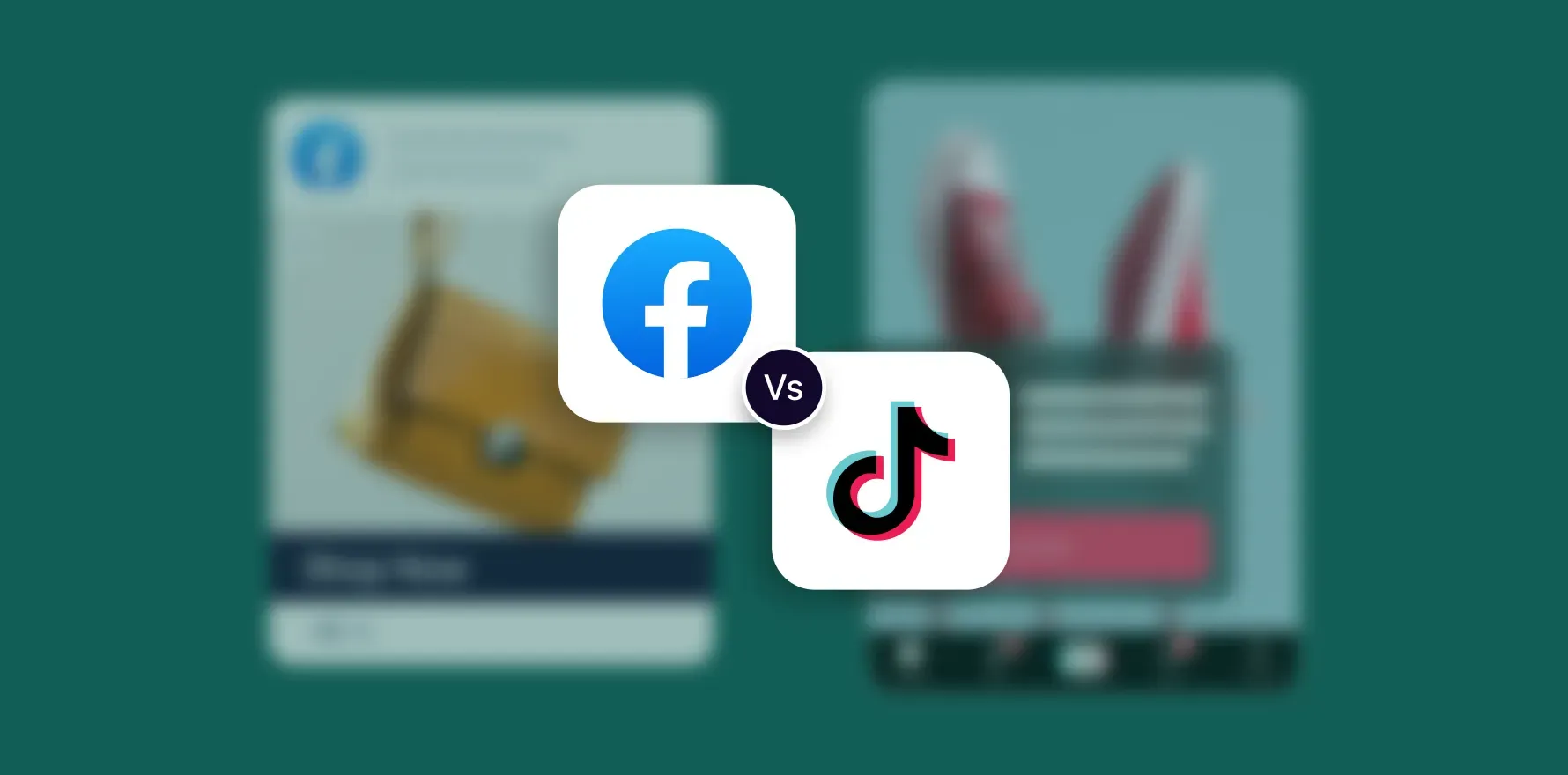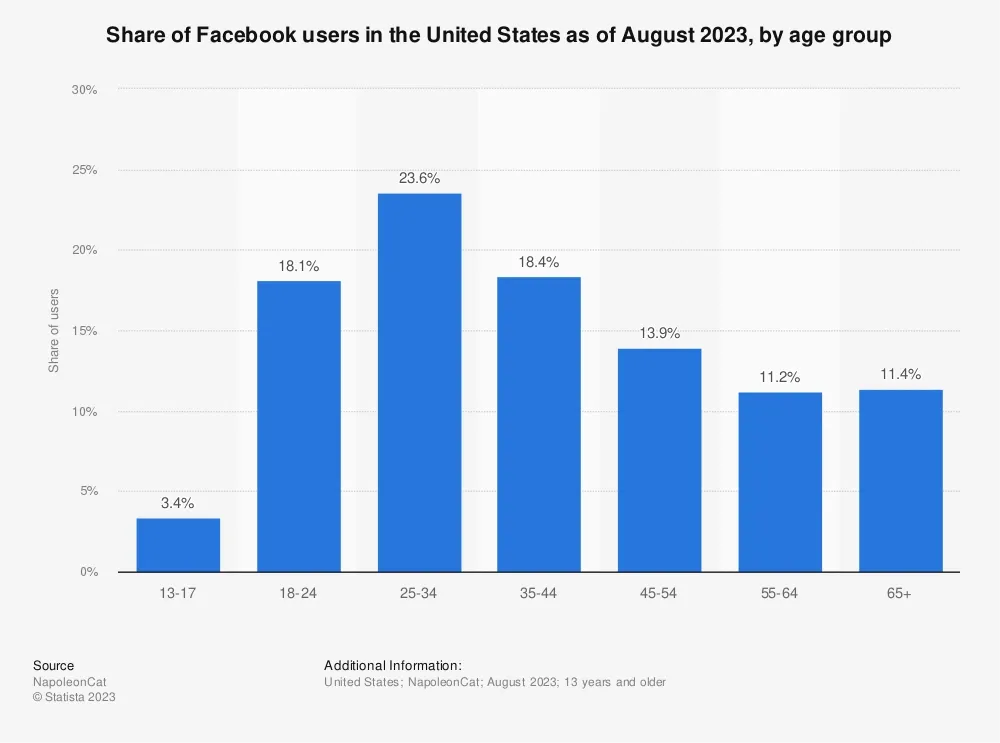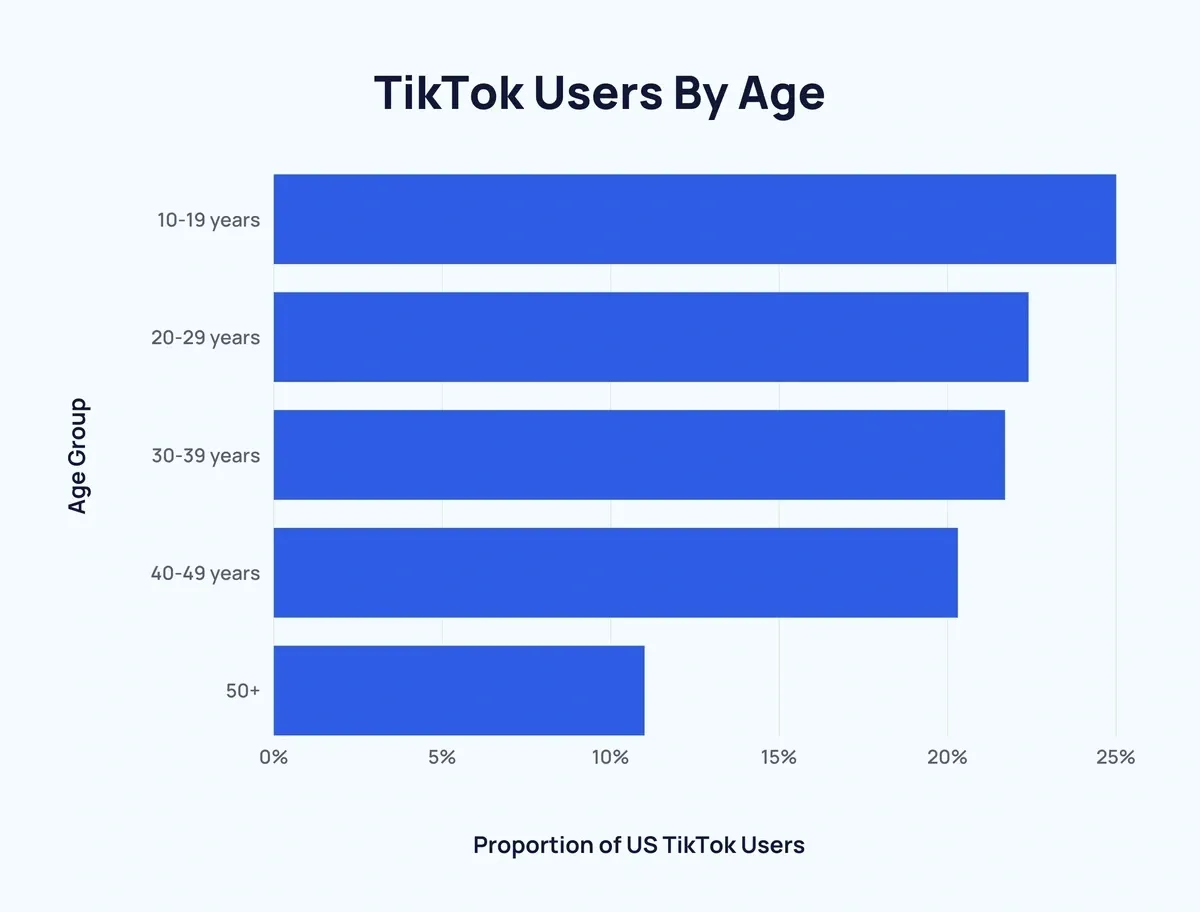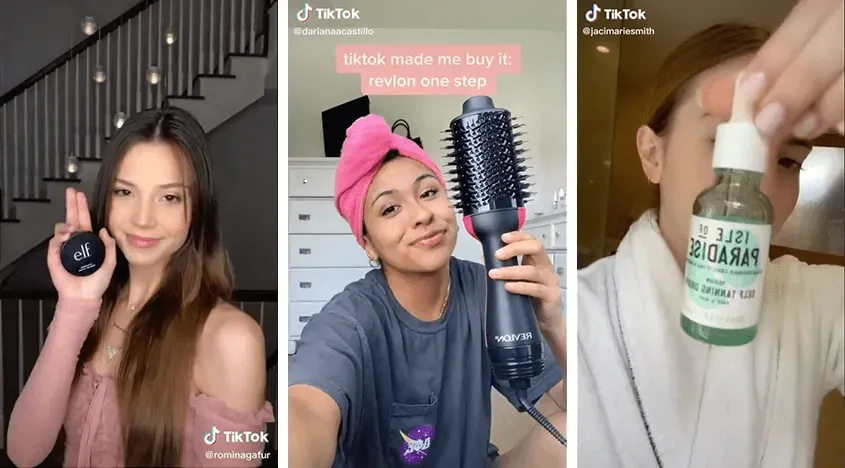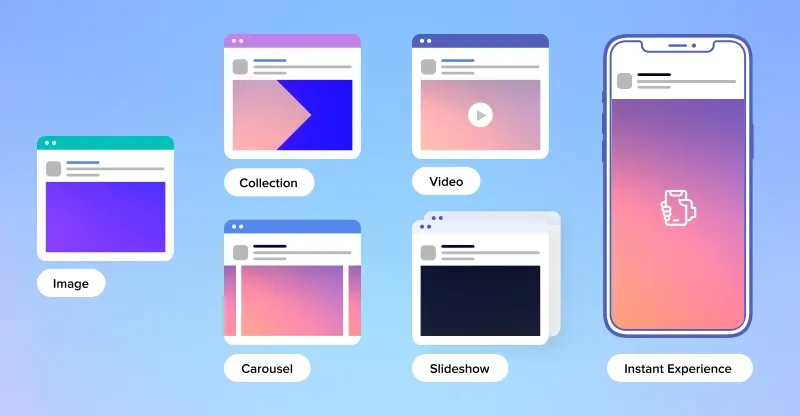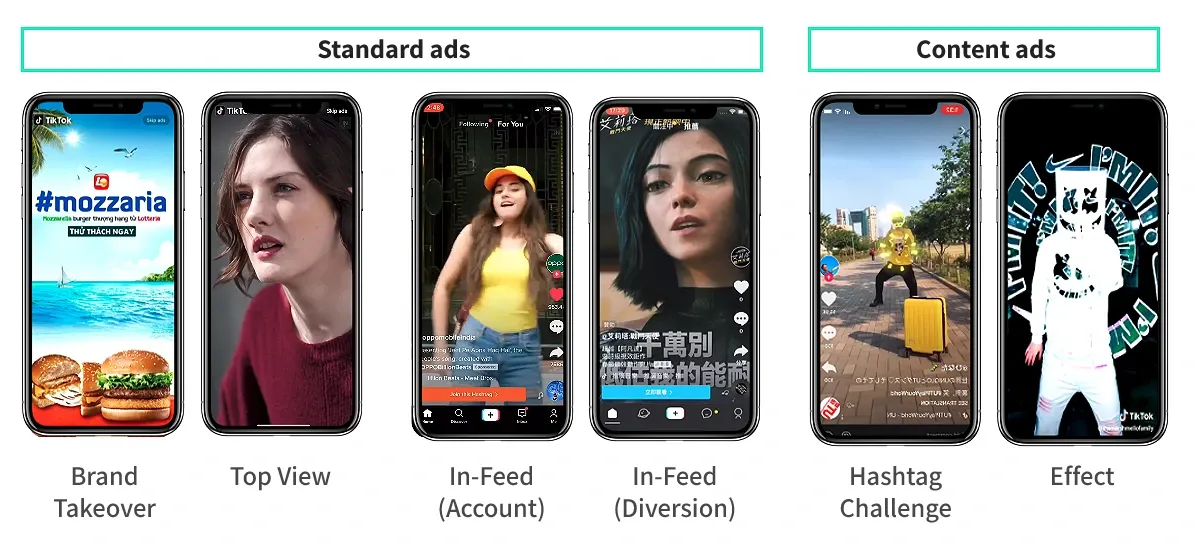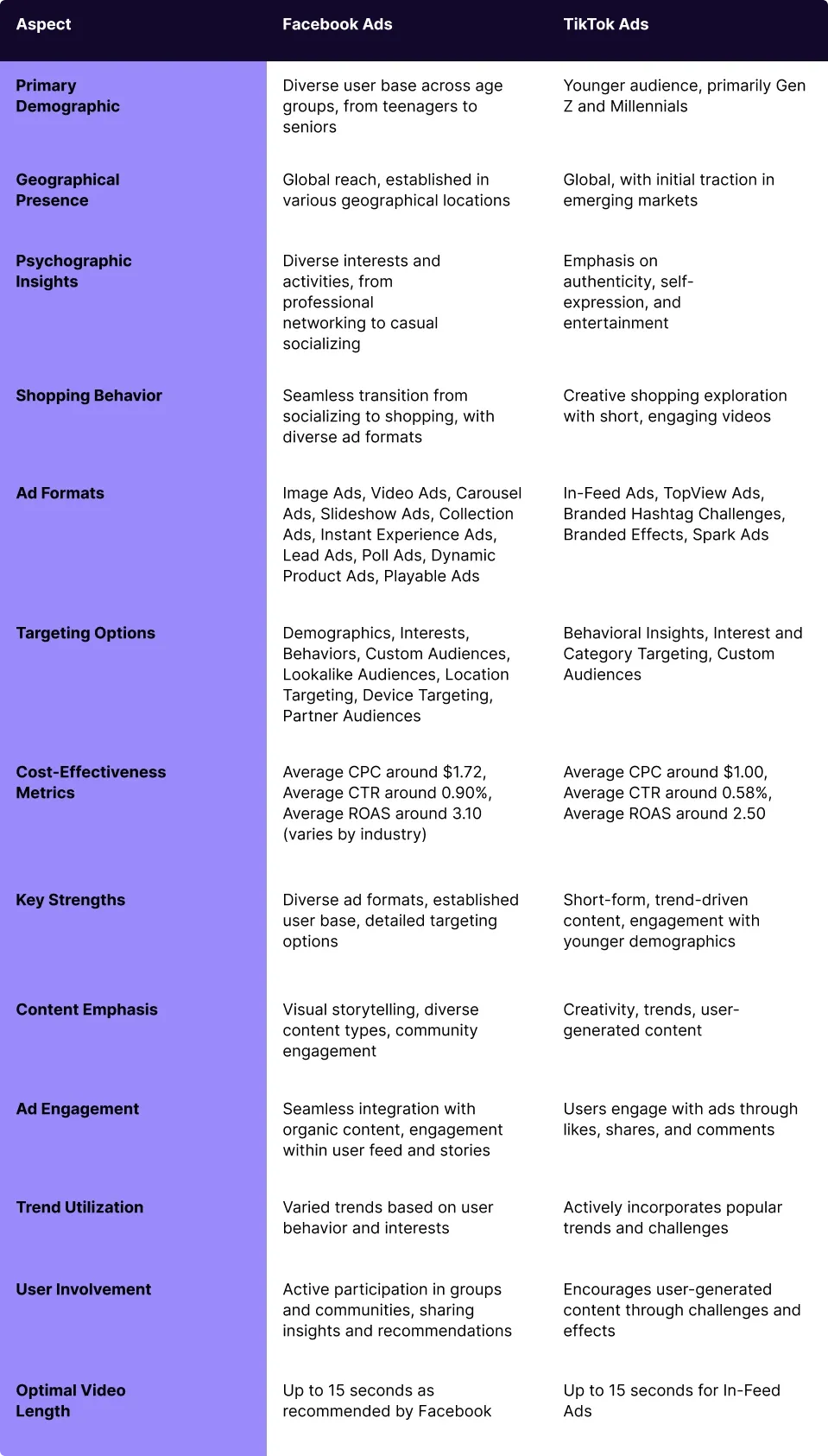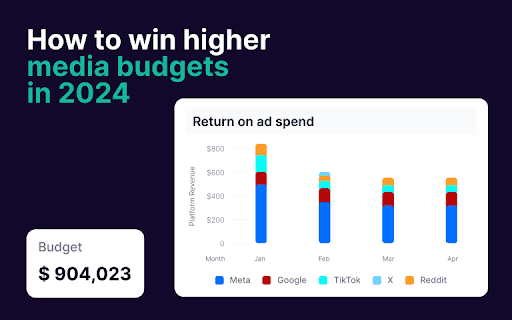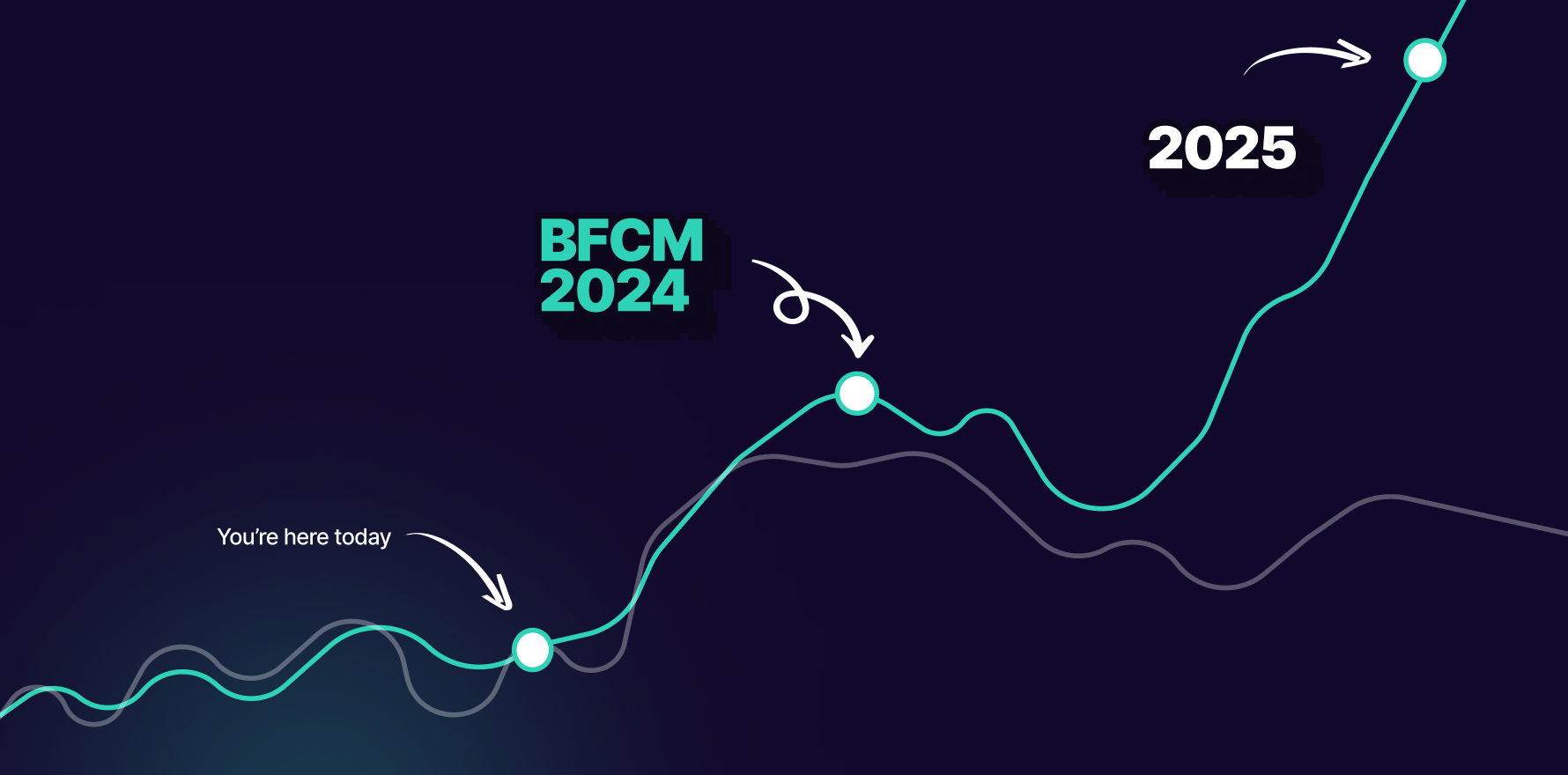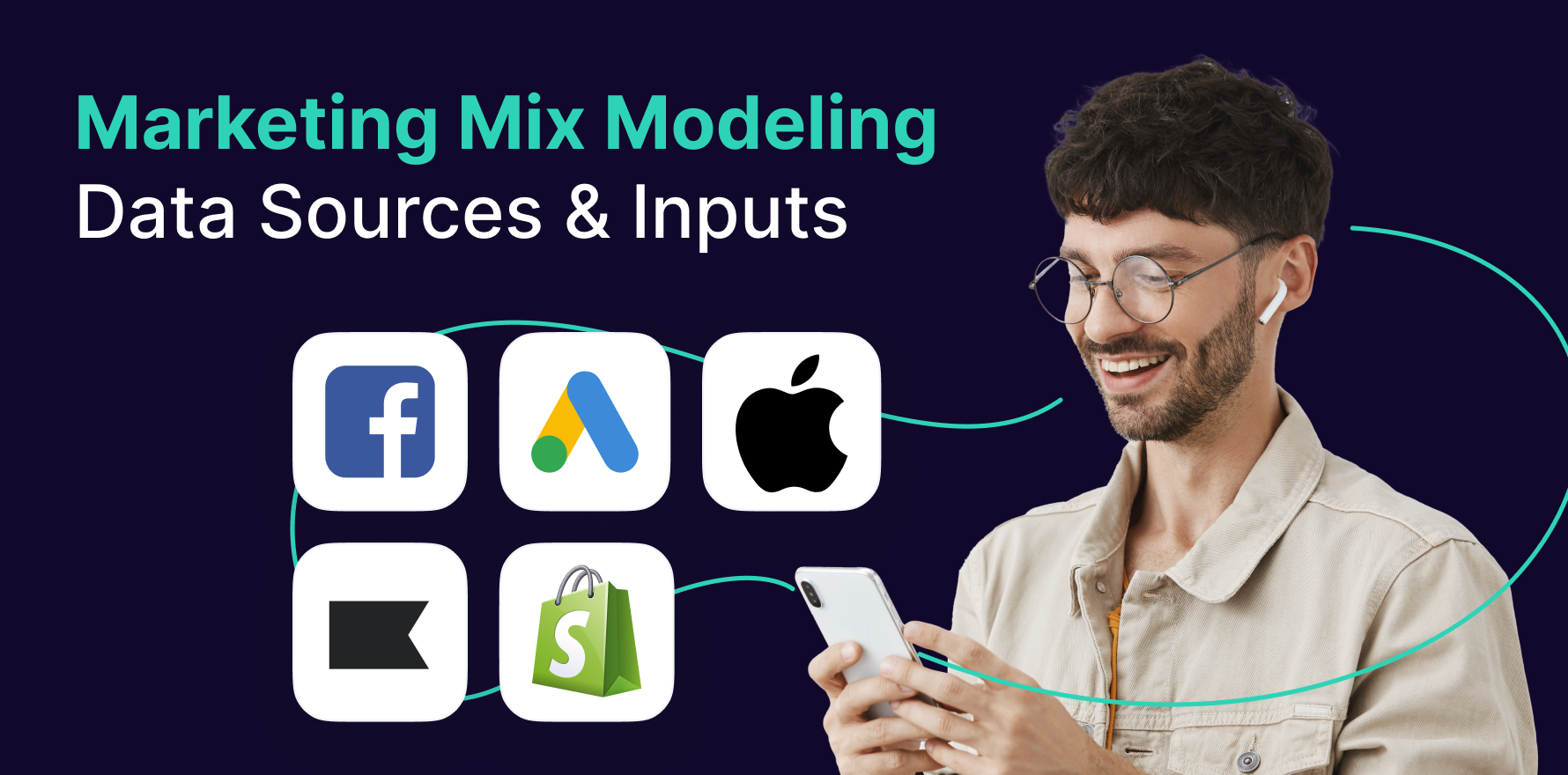Isle of Paradise, Elf concealer, The Pink Stuff, Aerie leggings, and a special pair of Zara jeans. Do you know what is common between all these products?
All these products gained popularity on TikTok by users showcasing them in their videos. This was a part of the very popular trend called “TikTok made me buy it”.
Before this campaign, marketers were still evaluating the platform to understand the results they could get on the platform. However, there was constant pushback due to privacy concerns and other reasons.
But this trend opened up the floodgates and challenged the most popular platform by making marketers take TikTok seriously.
In 2022, TikTok saw a 53% year-on-year growth in ad spending and took the total ad spend on the platform to $5.4 billion. And this growth has continued to 2023 as well with the ad spend expected to reach $11.2 billion by the end of 2023.
On the other hand, Facebook has still been a consistent revenue-generating channel for ecommere businesses. In 2022, the platform saw an ad spend of $43.3 billion and by the end of 2023, it is expected to reach $47.6 billion.
While the growth is not as exponential as TikTok, marketers are still wondering what ad platform among the two will get them better bang for the buck.
In this blog post, we will describe TikTok ads vs Facebook ads and give you a clear answer of what platform you should invest in.
Understanding the Audience of Facebook and TikTok
To navigate the ever-evolving landscape of digital advertising, it’s crucial to delve into the intricate details of the audiences that dwell on two of the most prominent platforms–Facebook and TikTok. Deciphering the demographical and psychographical profiles of these users is akin to unlocking the blueprint of your target market.
The Facebook demographic tapestry
1) Age distribution
Facebook, often dubbed as the social media veteran, boasts a diverse user base spanning various age groups. While it started as a platform for college students, it has gracefully aged with its user base. Today, it remains a hub for users across all age brackets, from teenagers to seniors. However, recent trends suggest a slightly older skew, with a substantial portion of users falling within the 25-34 age range
Distribution of Facebook users in the US as of August 2023, by age and gender
Source: Statista
2) Geographical spread
Facebook has established its global presence, with users spanning the entire spectrum of geographical locations. Whether you’re targeting urban dwellers in New York City or individuals in a quaint village, Facebook provides a vast canvas for your ads to leave an imprint.
3) Psychographic insights
The psychographic makeup of Facebook users is equally diverse. From individuals seeking professional networking on LinkedIn to those embracing a more casual social experience, Facebook accommodates a wide array of interests. It’s a platform where users share life updates, engage with community groups, and discover content that aligns with their passions.
The TikTok generation
1) Age distribution
TikTok, a relative newcomer to the social media scene, has swiftly carved a niche among the younger demographic. The platform is a vibrant playground for Gen Z and Millenials, with a significant portion of users aged 16 to 24. Its short-form video format resonates particularly well with those seeking quick, engaging content.
Distribution of Tiktok users in the US as of 2023, by age and gender
Source: Exploding Topics
2) Geographical spread
While TikTok has garnered a global following, it initially gained traction in countries where other platforms might have been less dominant. Emerging markets, often characterized by a burgeoning youth population, have become hotspots for TikTok’s growth. As the platform expands, so does its geographical diversity.
3) Psychographic insights
TikTok’s charm lies in its ability to captivate users with creative, bite-sized content. The psychographics of TikTok users often revolve around a desire for authenticity, self-expression, and entertainment. Users are drawn to trends, challenges, and the opportunity to be part of a global creative community.
Deciphering shopping behaviors: Facebook vs TikTok
Facebook’s shopping behavior
1) Browsing and discovery
Facebook, with its roots deeply embedded in social connections, has transformed into a dynamic marketplace where users seamlessly transition from socializing to shopping. The platform’s algorithms keenly observe user interactions, serving them a curated blend of content, including products and services tailored to their interests.
2) Ads as shopping guides
For advertisers, Facebook provides a fertile ground to showcase products through various ad formats – images, slideshows, videos, carousels, and stories. Users often find themselves discovering new brands and products as they scroll through their feeds or explore diverse Facebook placements. The journey from ad discovery to potential purchase is a well-integrated symphony.
3) Shopping community engagement
Groups and communities on Facebook have become thriving hubs for discussions, recommendations, and reviews. Users actively participate in these digital bazaars, sharing insights about products they’ve tried and tested. This communal approach adds a layer of trust to the shopping experience, making Facebook a dynamic space for brand engagement.
TikTok’s Shopping
1) Creative shopping exploration
TikTok, characterized by its short, engaging videos, has redefined the shopping experience with creative storytelling. Users don’t just scroll; they embark on visual journeys where products come to life. The “TikTok made me buy it” trend is a testament to how the platform fuels impulsive yet delightful shopping excursions.
the-very-popular-tiktok-made-me-buy-it-trend
Source: TikTok
2) Innovative ad formats
TikTok’s ad formats, ranging from In-feed to TopView and Branded Effects, seamlessly integrate into the user experience. Brands can showcase products in action, leveraging the first few seconds to grab attention and spark interest. The platform’s emphasis on user-generated content often blurs the lines between organic and promotional content.
3) Community-Driven commerce
TikTok thrives on trends and challenges, and this extends to shopping behavior. Users actively engage with content that highlights products in unique and entertaining ways. The platform’s youthful, trend-conscious audience contributes to the creation of a vibrant shopping culture, tuning product discoveries into shared experiences.
Navigating the Ad Landscape: Facebook vs TikTok
The success of your campaigns often hinges on choosing the right platforms and utilizing their unique strengths. Both Facebook and TikTok have their unique ad formats and targeting options that can help your business thrive in the competitive ad space.
Facebook ad formats and targeting
1) Ad formats
- Image Ads: These ads are simple and effective, using high-quality images to promote a product, service, or brand.
- Video Ads: Video ads are a powerful way to capture attention and tell a story. They can be up to 240 seconds long and can include a variety of creative elements, such as music, text, and graphics.
- Carousel Ads: Carousel ads allow you to showcase up to 10 images or videos in a single ad. This is a great way to highlight different features of a product, show multiple products, or tell a story in multiple frames.
- Slideshow Ads: Slideshow ads are a simplified version of carousel ads, automatically displaying a series of images with transitions.
- Collection Ads: Collection ads are designed to promote ecommerce products. They showcase items from your product catalog, allowing users to browse and purchase directly from Facebook.
- Instant Experience Ads: Instant Experience ads are full-screen, interactive ads that load quickly and provide a mobile-optimized experience. They can include video, images, text, and interactive elements, such as buttons and forms.
- Lead Ads: Lead ads are designed to capture contact information from potential customers. They typically include a form that users can fill out to receive more information about a product or service.
- Poll Ads: Poll ads allow you to ask users a question and see their responses in real-time. This can be a great way to gather feedback, generate interest, or promote a specific product or feature.
- Dynamic Product Ads: Dynamic product ads automatically create ads based on your product catalog. They show the most relevant products to each user based on their interests and browsing behavior.
- Playable Ads: Playable ads allow users to interact with a game or product before downloading or purchasing it. This can be a great way to showcase product features and drive engagement.
Source: Madgicx
the-different-facebook-ad-formats
2) Targeting options
Facebook offers a variety of targeting options to help you reach the right audience for your ads. However, there are three core options:
- Demographics: You can target your ads based on a variety of demographic factors, such as age, gender, location, language, education level, job title, and household income.
- Interests: You can target your ads based on people’s interests, such as hobbies, activities, entertainment preferences, and brands they follow.
- Behaviors: You can target your ads based on people’s online behaviors, such s websites they visit, apps they use, and purchases they make.
In addition to these core targeting options, Facebook also offers a number of advanced targeting features such as:
- Custom Audiences: Create custom audiences based on your own data, such as email addresses, phone numbers, or customer IDs.
- Lookalike Audiences: Create audiences that are similar to your existing customers or custom audiences.
- Location Targeting: Target your ads to people who are in a specific location, such as a city, country, or region.
- Device Targeting: Target your ads to people who are connected to your Facebook page, your app, or your website.
- Partner Audiences: Target your ads to people who are in the audience of your partners, such as other businesses or organizations.
TikTok’s ad formats and targeting
1) Ad formats
-
- In-Feed Ads: These ads appear seamlessly within a user’s For You Page (FYP), blending naturally with organic content. They can be up to 15 seconds long and can include video, images, or text.
- TopView Ads: These are full-screen, immersive ads that appear when users open the TikTok app. They are highly visible and can be up to 3 seconds long.
- Brand Takeover Ads: These ads take over the entire TikTok experience for 3-5 seconds, providing a full-screen, immersive experience. They can include videos or images and can be used to launch new products, promote events, or drive traffic to a website.
- Branded Hashtag Challenge: These ads encourage users to create their own content using a branded hashtag. This can help to generate brand awareness and engagement, as users share their own videos and promote the hashtag.
- Branded Effects: These ads allow brands to create their own custom filters and effects that users can apply to their videos. This can be a fun and engaging way to promote a brand and encourage user-generated content.
- Spark Ads: These ads are part of TikTok’s Spark AR platform, allowing brands to create their own augmented reality (AR) effects. This can be a unique and immersive way to promote a brand and product.
tiktok-ad-formats
Source: Digital Business Lab
2) Targeting Options
- Behavioral Insights: TikTok analyzes user behavior based on engagement actions, such as likes, shares, comments, and scrolling patterns. This data fuels personalized targeting, aligning ads with users’s interests and behaviors.
- Interest and Category Targeting: Advertisers can tap into TikTok’s evolving audience targeting options, reaching users based on their interests and preferences. The platform’s algorithm refines targeting to enhance ad performance.
- Custom Audiences: Similar to Facebook, TikTok allows advertisers to create custom audiences, ensuring that their ads reach users who have previously interacted with their brand. This enhances the probability of conversions.
Decoding ROI: Facebook vs TikTok
Let’s get to the meat of the conversation now: where does your marketing budget yield the best returns?
The dollars and sense: Cost-Effectiveness on Facebook
1) Cost-Per-Click (CPC) and Click-Through-Rate (CTR) :
Facebook, with its vast user base and diverse ad formats, offers a spectrum of CPC and CTR values. The average CTR for Facebook ads across all industries is around 0.90%. This means that for every 100 times an ad is displayed, it is clicked on an average of 0.9 times.
The average CPC for Facebook ads across all industries is around $1,72. This means that advertisers pay an average of $1.72 for every click on their ads
2) Return on Ad Spend (ROAS):
The ROAS on Facebook, a metric gauging the revenue generated for every dollar spent on ads, can vary widely across industries. The average ROAS across all industries is around 3.10. However, it can vary widely, ranging from as low as 1 to as high as 10 or more.
The TikTok surge: Metrics and insights
1) Cost-per-click (CPC) and Click-Through Rate (CTR):
TikTok with its youthful and engaged audience, presents a dynamic landscape for CPC and CTR. The average CTR for TikTok ads across all industries is around 0.58%. However, CTR can range from as low as 0.2% to as high as 1% or more.
The average CPC for TikTok ads across all industries is around $1.00. However, CPC can range from as low as $0.20 to as high as $3 or more.
2) Return on Ad Spend (ROAS):
TikTok’s ROAS while steadily improving, is propelled by the platform’s ability to turn trends into purchasing behavior. The average ROAS for TikTok ads across all industries is around 2.50. This means that for every $1 spent on TikTok ads, advertisers can expect to generate $2.50 in revenue.
As TikTok expands its advertising features, industries such as tech and education are finding innovative ways to capitalize on the platform’s creative potential, albeit with varying ROAS.
Note: These numbers are just average values. Your actual numbers may be higher or lower depending on multiple factors like your industry, audience targeting, ad relevance, and ad formats.
However, there are some additional factors that impact these metrics:
- Campaign objectives: Advertisers focused on brand awareness may see lower CTRs and higher CPCs, while those focused on conversions may see higher CTRs and lower CPCs.
- Ad relevance: Ads that are relevant to users interests and needs are more likely to have higher CTRs and lower CPCs.
- Landing page optimization: Users who are directed to relevant and optimized landing pages are more likely to convert, leading to higher ROAS.
- Audience targeting: Carefully targeting your ads to the right audience can significantly improve CTR, CPC, and ROAS.
Before we conclude what platform is the best for ads, here’s a table summarizing everything about Facebook and TikTok ads:
a table comparing facebook ads and tiktok ads
Which is the right platform for your business?
In this arena, one size certainly doesn’t fit all. The decision between TikTok ads and Facebook ads relies on understanding your audience, aligning with your brand’s ethos, and tailoring your content strategy accordingly.
If your target demographic is Gen Z and Millenials, TikTok is an ideal playground. The platform’s short-form videos and trend-centric content resonate deeply with the audience. Brands that thrive on creativity and effects can amplify brand visibility and engagement.
However, one unique observation we see is the majority of brands that excel on TikTok usually sell low-ticket items. This might be because of the comparatively inferior buying power of the audience on that platform.
On the other hand, with users spanning various age groups, Facebook remains a go-to platform aiming for a diverse audience. From teens to seniors, it offers a wide canvas for your advertising endeavors. Also, the plethora of ad formats, from images to videos and carousel ads, provides versatility. Businesses with different marketing goals can find suitable options within Facebook’s repertoire.
But, the platform is seeing a significant decrease in new users and engagement from the younger demographic. This ironically makes both TikTok and Facebook complementary to each other.
In essence, your choice should be a strategic one, designed to sync with your brand’s identity and the expectations of your target audience. Whether it’s the trends of TikTok or the diversity of Facebook, your marketing should resonate with the audience you aim to captivate. The key lies in understanding your story and telling it where it’s heard the loudest.
Bonus Content: 5 Tips to Get the Best of Facebook Ads
1) Craft captivating visuals
In a sea of content, visuals make the first impression. Invest in high-quality images and videos that resonate with your audience. Facebook’s various ad formats—Image ads, Video Ads, and Carousel Ads—give you the canvas to tell your brand story creatively
2) Leverage video ads for impact
Video is the king of content, and on Facebook, it’s no different. Create attention-grabbing videos that resonate with your audience. We recommend you use 60-second video ads to tell your brand story and connect emotionally with users.
3) Harness the power of instant experience ads
Immerse users in a full-screen, interactive experience with Instant Experience Ads. These ads load quickly, providing a mobile-optimized journey for users. Include videos, images, text, and interactive elements to keep users engaged and drive conversions.
4) Utilize dynamic product ads
For ecommerce businesses, Dynamic Product Ads are a game-changer. Automatically generated based on user interests and browsing behavior, these ads showcase the most relevant products, boosting the chances of conversion.
5) Utilize tools like Facebook Conversion API
Facebook’s Conversion API (CAPI) is a tool that allows businesses to send customer data from their own servers directly to Facebook. This will help you get more accurate tracking of conversions, better optimization, and more control over your data even if the users set up ad blockers.
Case in point: Here’s how a home furnishing brand leveraged Facebook CAPI to solve their cart abandonment problem and 2x their AOV.
Bonus Content: 5 Tips to Get the Best of TikTok Ads
1) Embrace short-form videos
TikTok’s DNA is built on short-form video content, and that’s where your ad strategy should shine. Keep your videos concise, engaging, and visually captivating. Aim for 15 seconds or less to align with the platform’s natural rhythm. TikTok users are there for quick, entertaining content, so make every second count
2) Leverage TikTok’s unique ad formats
TikTok offers a variety of ad formats tailored to its dynamic user experiences. In-Feed Ads seamlessly integrate into users For You Page (FYP), TopView Ads provide a full-screen, immersive experience upon app opening, and Branded Hashtag Challenges encourage user-generated content with a branded twist.
3) Ride the trend wave
TikTok is a trend-driven platform where users actively participate in challenges and follow the latest crazes. Incorporate popular trends into your ad content to align with the platform’s culture. This not only increases the chances of your ad being discovered but also positions your brand as current and in tune with TikTok’s vibrant community.
4) Engage with user-generated content
TikTok thrives on the creativity of its users. Consider launching campaigns that encourage users to create content related to your brand or product. Branded Effects and Hashtag Challenges are powerful tools to foster user engagement. When users become part of the creative process, it strengthens the connection between your brand and the TikTok community.
5) Leverage TikTok’s server-side tools
Tools like Events API allows businesses to send customer data from their own servers directly to TikTok. This gives businesses more control over their data and allows TikTok to provide more accurate tracking and optimization of ad campaigns.
Case in point: Here’s how an apparel brand discovered its best-paid channel using TikTok’s Events API.
You may also like
Essential resources for your success
